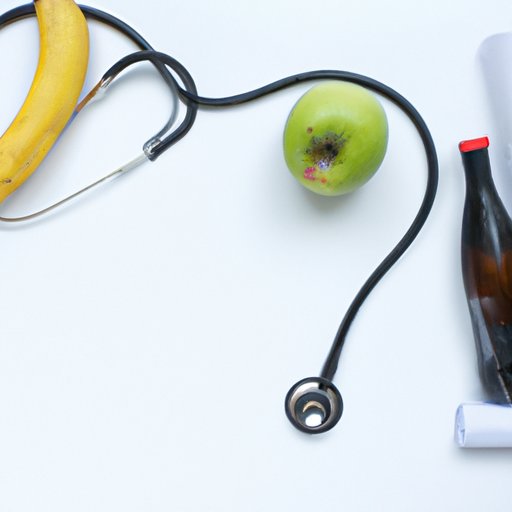I. Introduction
High blood pressure, also known as hypertension, is a common condition that can have serious health consequences if left unmanaged. According to the American Heart Association, over 100 million Americans have high blood pressure.
This article aims to provide readers with tips and strategies for lowering their blood pressure through lifestyle changes. By adopting a healthy diet, maintaining a healthy weight, reducing sodium intake, exercising regularly, limiting alcohol intake, and managing stress, individuals can reduce their risk of hypertension and improve their overall health.
II. Adopt a Healthy Diet
Foods high in saturated and trans fats, sodium, and added sugars can contribute to high blood pressure. Instead, focus on eating a healthy, nutrient-dense diet.
Incorporate more fruits and vegetables, lean protein, whole grains, low-fat dairy products, and healthy fats like those found in nuts, seeds, and avocados. Research suggests the DASH diet, which emphasizes whole foods and limits processed foods, can significantly lower blood pressure.
Practical tips for making healthy dietary changes include planning meals in advance, cooking at home, and keeping healthy snacks on hand.
III. Maintain a Healthy Weight
Being overweight or obese is a risk factor for high blood pressure. Losing even a small amount of weight can make a big difference in blood pressure readings.
Incorporating regular exercise, practicing portion control, and focusing on whole, nutrient-dense foods can help individuals achieve and maintain a healthy weight. Other benefits of weight management include improved energy levels, better sleep, and reduced risk of chronic diseases.
IV. Reduce Sodium Intake
Sodium is an essential mineral, but adults should aim to consume no more than 2,300 milligrams per day. Many processed foods are high in sodium, making it important to read food labels and choose lower-sodium options whenever possible.
Flavor food with herbs, spices, or lemon juice instead of salt to reduce sodium intake. Other ways to cut down on sodium include avoiding fast food, canned foods, and processed snacks.
V. Regular Exercise
Physical activity can help lower blood pressure by improving heart and blood vessel function, reducing stress, and helping with weight management.
Cardiovascular exercise like brisk walking, cycling, or swimming and strength training have both been shown to improve blood pressure readings. Aim for at least 30 minutes of moderate exercise most days of the week.
Other ways to incorporate more physical activity into daily life include taking the stairs, walking or biking instead of driving, and joining a fitness class or sports team.
VI. Limit Alcohol Intake
Drinking too much alcohol can raise blood pressure and damage the heart. It is recommended that men limit themselves to two drinks per day and women limit themselves to one.
Tips for reducing alcohol intake include alternating alcoholic drinks with non-alcoholic beverages, avoiding drinking in situations that encourage heavy drinking, and finding other ways to cope with stress or emotions instead of turning to alcohol.
VII. Manage Stress
Stress can contribute to high blood pressure as well as other health problems. By incorporating stress management techniques into daily life, individuals can reduce stress and improve overall health.
Practices like deep breathing, meditation, yoga, and journaling have been shown to be effective in managing stress. Finding a stress-busting activity that brings you joy, such as listening to music or spending time in nature, can also be helpful.
VIII. Conclusion
Lowering blood pressure involves making sustainable lifestyle changes. By adopting a healthy diet, maintaining a healthy weight, reducing sodium intake, exercising regularly, limiting alcohol intake, and managing stress, individuals can reduce their risk of hypertension and improve their overall health.
It’s important to remember that small, gradual changes can add up over time. For those interested in learning more about blood pressure management, resources like the American Heart Association and National Heart, Lung, and Blood Institute are great places to start.
